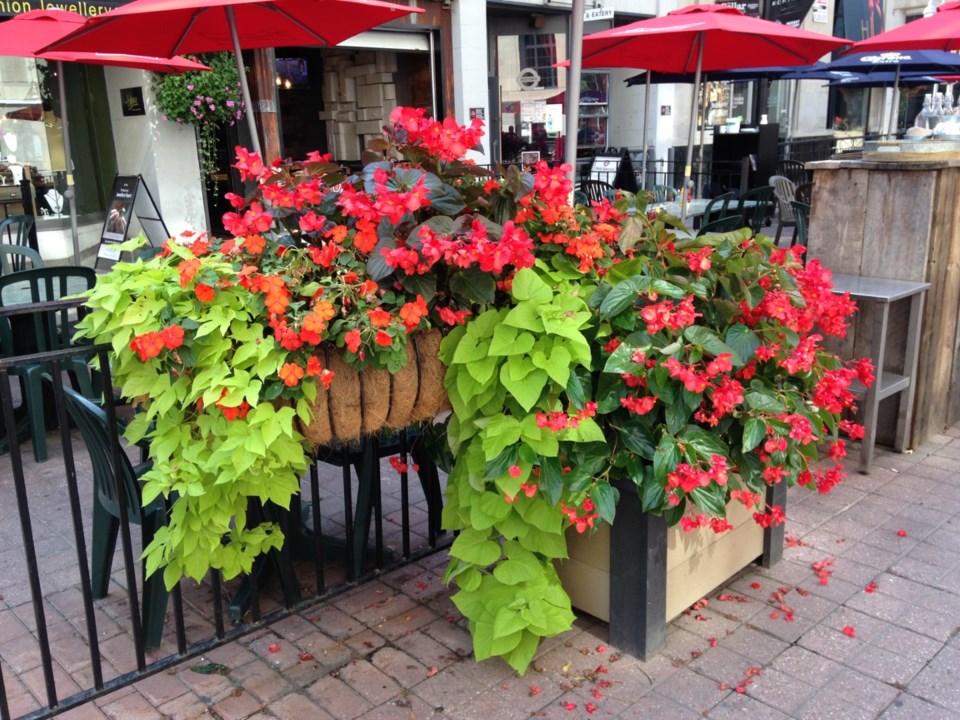When considering plants that grow from bulbs, one often thinks of tulips, daffodils or crocuses however, there are many other beautiful summer flowers grown from bulbs: these bulbs are planted in spring. Technically, many of these flowers are not grown from bulbs but from other underground storage organs. These storage organs may include bulbs as well as rhizomes, corms and tubers.
Gladiola flowers are grown from corms and produce excellent cut flowers. Corms are specialized sections of the stem that form roots. Corms are round and flattened in shape. Plant the pointy side up and about four times as deep as their width. Gladiolas usually only produce one flower per corm so plant corms at one-week intervals for about four weeks in spring to ensure a continuous bloom in the garden. As with any tender geophyte (that has underground storage organs), plant the corm once the soil has warmed to at least 15ËšC (approximately mid-May in Saskatchewan) and about two weeks before the latest spring frost.
Dahlia and begonia tubers and calla lily and canna lily rhizomes can be started indoors to get a jump start on the gardening season. Plant the tubers or rhizomes indoors as early as April 1st in a warm, sunny location. Ensure the tuber or rhizome is in a large enough container (at least 3cm wider than the tuber or rhizome) with holes in the bottom for drainage. If planting directly outdoors in spring, soil temperatures should be at least 15ËšC (3rd or 4th week in May). For dahlias, begonias, canna lilies or calla lilies that have been started indoors, do not transplant outdoors until any danger of frost has passed. Any exposed foliage on these tender geophytes will freeze below 0ËšC.
Elephant Ears (Colocasia, Alocasia and Xanthosoma) are a group of tropical plants grown from tubers and known for their large, heart-shaped leaves. All these plants can be grown as houseplants throughout the winter and moved outdoors for the summer. The tubers can also be harvested in fall: cut the tops about 2.5cm from the tuber and stored in a cool, dry location. A pot with dry peat moss in the basement is a perfect storage location for elephant ears.
All of these tender geophytes prefer even moisture throughout the growing season. Tuberous begonias and elephant ears favor dapple sun whereas gladiolas, canna lilies and calla lilies enjoy full sun.
If you want to enjoy your tender bulbs for more than one season, consider harvesting the underground corms, tubers or rhizomes in the fall and storing them indoors over the winter. Before storage, allow foliage to dry down or to experience a light frost. Ensure that the frost does not affect the tubers/rhizomes/corms. If foliage is killed by frost, dig the plant up within 1-2 days to prevent rot-causing organisms from entering the root through the damaged stem. Dig carefully and deeply to avoid any damage to the tubers/corm/rhizome. Cut stems back to 2.5-5cm from the underground storage organ.
Lightly shake off excess soil from the roots. If soil is a heavy clay, gently wash roots with a stream of warm water. However, NEVER wash gladiola corms: this will encourage rot in storage. Place roots on a screen or dry surface to dry off for several days: warm, dark conditions are best. Gladiola corms and calla rhizomes should cure (remain in these warm, dry conditions) for 3 weeks; other tender bulbs for at least several days. Never store any damaged or diseased plant tissues: they will rot in storage.
Store tubers, corms and rhizomes in slightly moist peat moss in perforated plastic bags. Open the bags every few weeks for aeration, to check for rot and to mist. Temperatures around 10ËšC are ideal for storage. If you find the perforated plastic bags are too moist, wrap underground plant parts in newspaper, place in a covered cardboard box and cover lightly with peat moss or sawdust.
Tubers and rhizomes can be divided in fall or spring. Sometimes it is easier to see the eyes on the tubers or the sprouts on the rhizomes in fall. If splitting in fall, let the cuts dry before placing in storage.
The key to storing tender bulbs/rhizomes/corms is to keep them cool, and keep them dry but don’t let them dry out.
This column is provided courtesy of the Saskatchewan Perennial Society (SPS; [email protected] ). Check our website (www.saskperennial.ca) or Facebook page (www.facebook.com/saskperennial) for a list of upcoming gardening events




